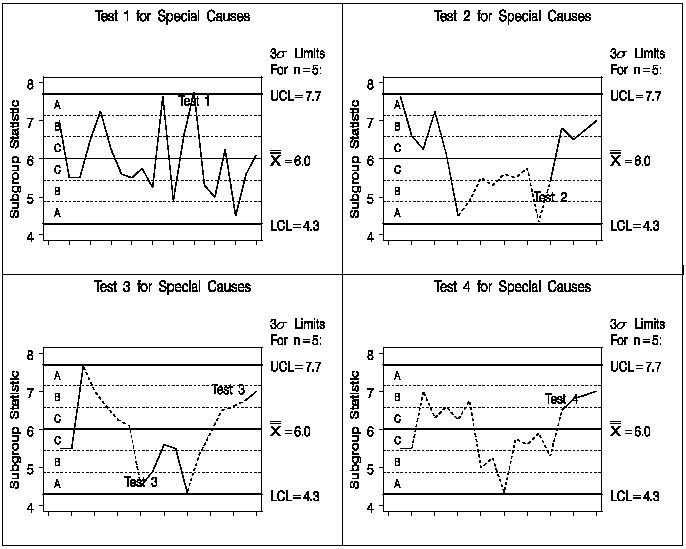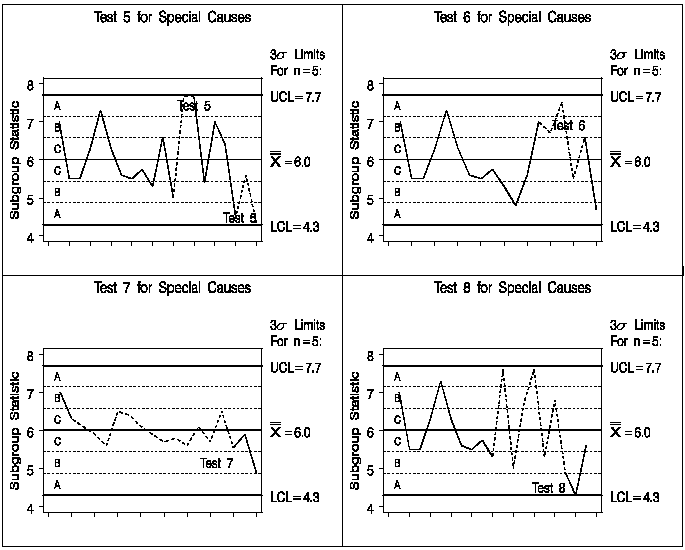Chapter Contents
Previous
Next
|
Chapter Contents |
Previous |
Next |
| Tests for Special Causes |
The SHEWHART procedure provides eight standard tests for special causes, also referred to as rules for lack of control, supplementary rules, runs tests, runs rules, pattern tests, and Western Electric rules. These tests improve the sensitivity of the Shewhart chart to small changes in the process.* You can also improve the sensitivity of the chart by increasing the rate of sampling, increasing the subgroup sample size, and using control limits that represent less than three standard errors of variation from the central line. However, increasing the sampling rate and sample size is often impractical, and tightening the control limits increases the chances of falsely signaling an out-of-control condition. By detecting particular nonrandom patterns in the points plotted on the chart, the tests can provide greater sensitivity and useful diagnostic information while incurring a reasonable probability of a false signal.
The patterns detected by the eight standard tests are
defined in Table 48.1 and Table 48.2, and they
are illustrated in Figure 48.1 and Figure 48.2.
All eight tests were developed for use with fixed
![]() limits.
The tests are indexed according to the numbering sequence
used by Nelson (1984, 1985).
You can request any combination of the eight tests by specifying
the test indexes with the TESTS= option in
the BOXCHART, CCHART, IRCHART, MCHART, MRCHART, NPCHART, PCHART,
UCHART, XCHART, XRCHART, and XSCHART statements.
The following restrictions apply to the tests:
limits.
The tests are indexed according to the numbering sequence
used by Nelson (1984, 1985).
You can request any combination of the eight tests by specifying
the test indexes with the TESTS= option in
the BOXCHART, CCHART, IRCHART, MCHART, MRCHART, NPCHART, PCHART,
UCHART, XCHART, XRCHART, and XSCHART statements.
The following restrictions apply to the tests:
| Test Index | Pattern Description |
| 1 | One point beyond Zone A (outside the control limits) |
| 2 | Nine points in a row in Zone C or beyond on one side of the central line (see Note 1 below) |
| 3 | Six points in a row steadily increasing or steadily decreasing (see Note 2 below) |
| 4 | Fourteen points in a row alternating up and down |
in

|
Notes:
| Test Index | Pattern Description |
| 5 | Two out of three points in a row in Zone A or beyond |
| 6 | Four out of five points in a row in Zone B or beyond |
| 7 | Fifteen points in a row in Zone C on either or both sides of the central line |
| 8 | Eight points in a row on either or both sides of the central line with no points in Zone C |
in

|
|
Chapter Contents |
Previous |
Next |
Top |
Copyright © 1999 by SAS Institute Inc., Cary, NC, USA. All rights reserved.